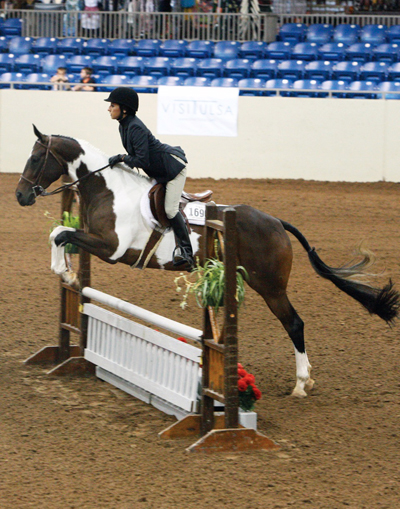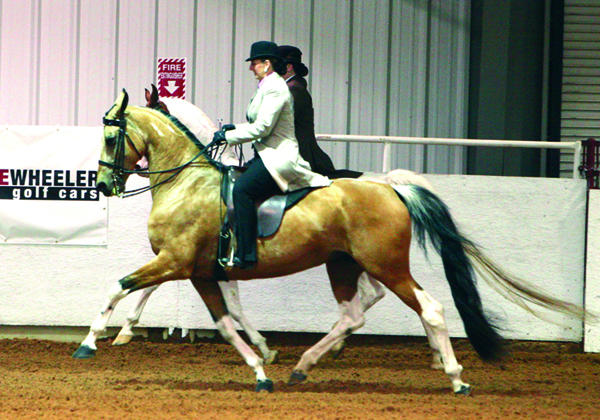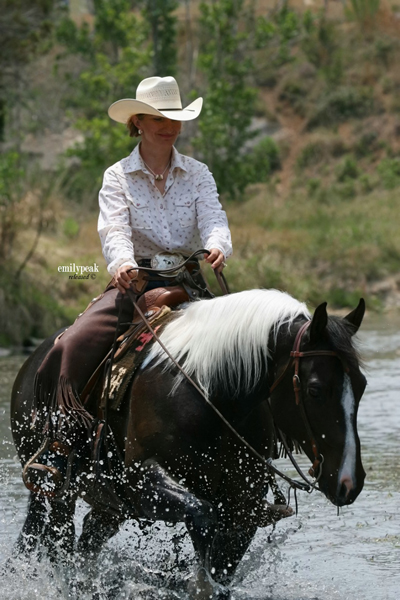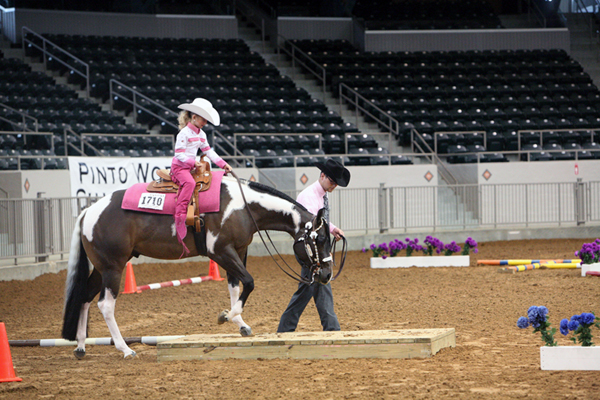The Pinto Horse Breed Profile
Do you know the difference between the Pinto and the Paint horse? "American Paint horses are limited to registered bloodlines of Paint, American Quarter Horse and Thoroughbred horses, whereas the Pinto can be from an array of bloodlines." –PtHA Learn more about the Pinto in our latest Horse Breed Profile series.
Equitrekking interviews Matt Stockman, Director of Communications, Marketing and Registration of The Pinto Horse Association of America (PtHA). Matt shares the orgins and the distinctions of what makes the Pinto a unique type of horse.

A young Pinto foal / Photo courtesy: PtHA
Raina Paucar for Equitrekking: What are the origins of the Pinto?
Matt Stockman: The Pinto horse originated in Spain and was introduced to North America by Spanish and other European explorers. The Spanish explorers brought over Barb horses that had been crossed with other European breeds including; Russian and Arabian strains–which are thought to give the horses their color patterns. When the Spanish herds were brought to North America, these horses mixed with the wild horses and were later domesticated by the Native Americans.
Later, when the West was being tamed, the pioneers had to cross their refined European horses with the wild herds to develop a stockier and heavier muscled horse that would be more suited to the rugged and arduous conditions.
Often referred to as piebald or skewbald horses in literature about the Wild West, the Pinto horse was a favorite among American cowboys and Native Americans.

A Pinto in a hunter/jumper class / Photo courtesy: Amanda Bradley
Equitrekking: What are the general conformation characteristics of the Pinto?
Matt Stockman: Conformation extremely varies within Pintos, since the term Pinto is referring to a colored horse and can encompass many different conformation types. For example, the Pinto Horse Association of America registers several different classifications of the Pinto. These five classifications are divided by height and/or type of horse.
The classifications include:
- Horse
- Pony
- Miniature
- “B” Miniature
- Utility
These separate classifications have specific characteristics unique to their kind, including the refinement of the Pleasure type Pinto horse and the stocky or muscled Stock type Pinto horse.

A miniature Pinto in a driving class / Photo courtesy: Amanda Bradley
Equitrekking: How has the Pinto been used and ridden throughout history?
Matt Stockman: Pintos have been ridden throughout history in many facets. Native Americans commonly used these horses in their everyday routines, including for work and war.
Additionally, throughout history and in the present day Pintos are used in parades and other large spectator events. Recently a picture was taken with Queen Elizabeth of Great Britain horseback on a Pinto.
Equitrekking: What are some fun facts people may not know about the Pinto?
Matt Stockman: A common misconception among people is that Pinto is a color and a specific horse breed. Truth is any horse, pony or miniature with a certain amount of eligible white can be considered a Pinto. This does exclude horses with Appaloosa, Mule or large draft breeding.

A beautifully colored saddle type Pinto being ridden saddleseat / Photo courtesy: Stephanie Smolek
Equitrekking: What style of rider best suits the Pinto?
Matt Stockman: Due to the number of Pintos, there truly is an event for everyone. These horses are very versatile and can be used within just about every aspect of the equine industry. The most common classes are Western, English, Dressage and Recreational or Trail.

PtHA member, Francine Accord-Brown participating in America’s Favorite Trail Horse competition on HRTV
Equitrekking: Has the Pinto evolved over time?
Matt Stockman: The Pinto continues to evolve over time. The association is very progressive and allows new outcrosses and sees new trends within the industry quite regularly.
Equitrekking: Please share some famous historical Pintos?
Matt Stockman: There have been several famous Pintos over the years, some of the more common names include: Tonto's Scout, Little Joe Cartwright's Conchise, Frank Hopkins' Hildalgo
Equitrekking: What makes the Pinto unique as a breed?
Matt Stockman: The Pinto is unique because it does encompass so many different horses, ponies and miniatures. No other breed can include such a large number of animals within the equine industry. There truly is something for everyone with which to be involved.
Today’s Pinto is primarily a color show horse rather than a specific breed. With no specific bloodlines amongst the classifications, you can have a broad spectrum of horses proudly referring to themselves as Pintos.

Youth exhibitor on a Pinto / Photo courtesy: Stephanie Smolek
Here are further resources where you can learn more about the Pinto:
Visit the The Pinto Horse Association (PtHA) website, like their Facebook page and follow them on Twitter @PintoHorseAssoc





